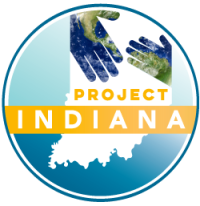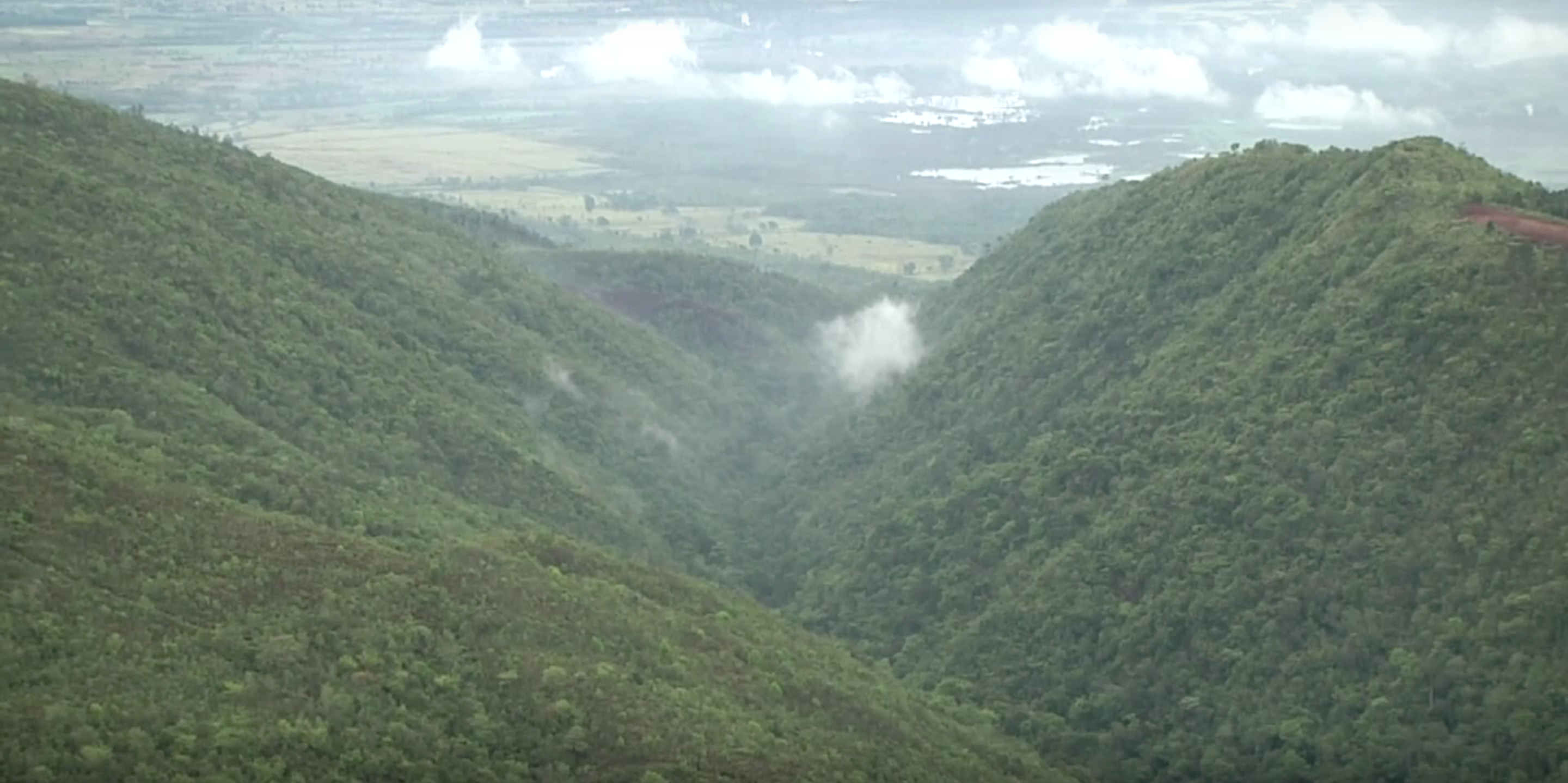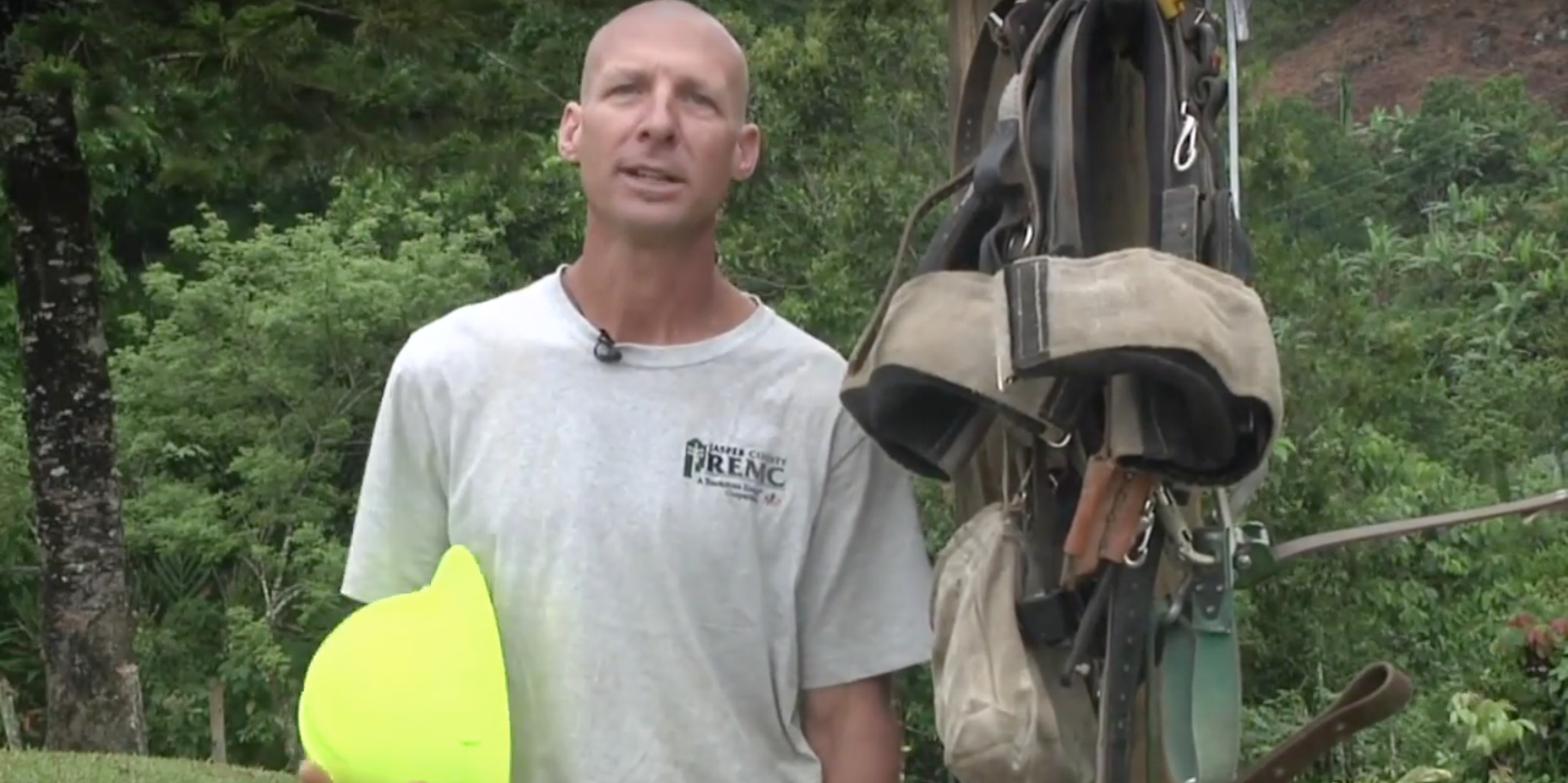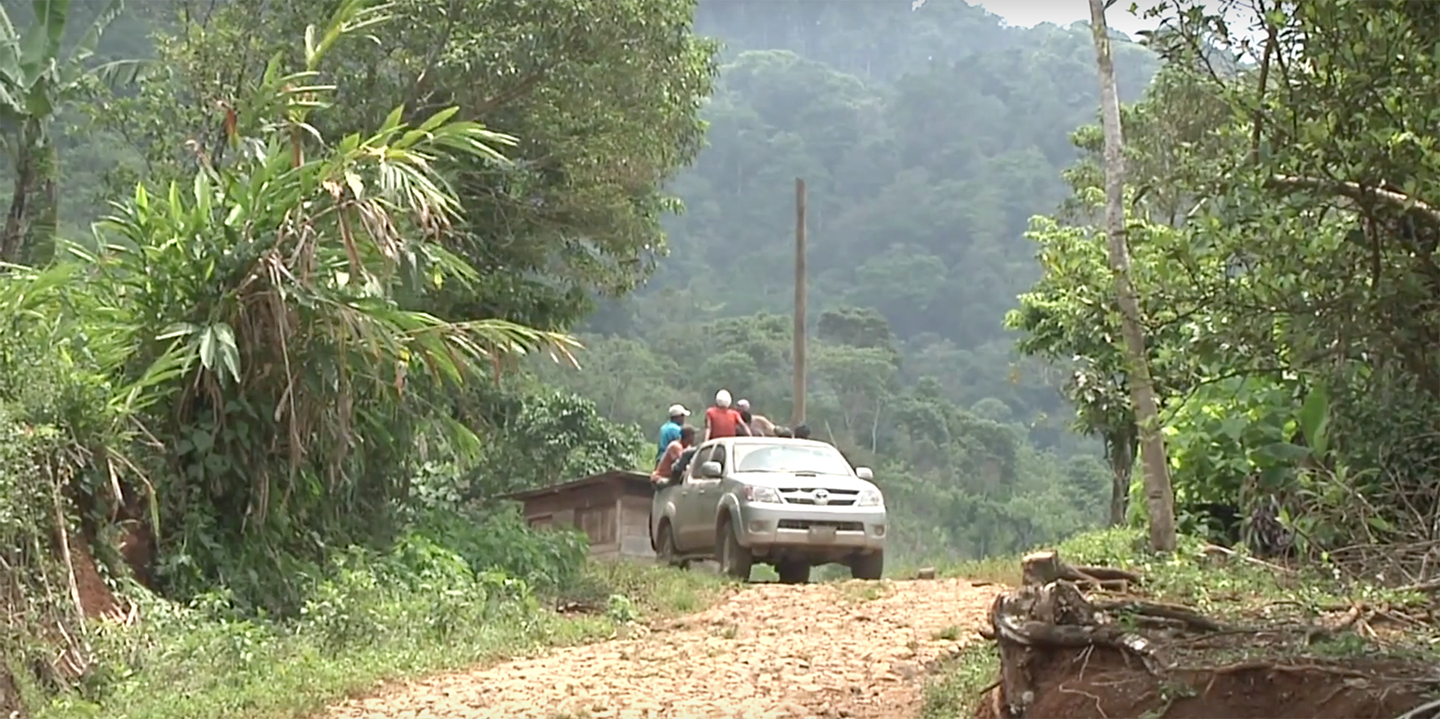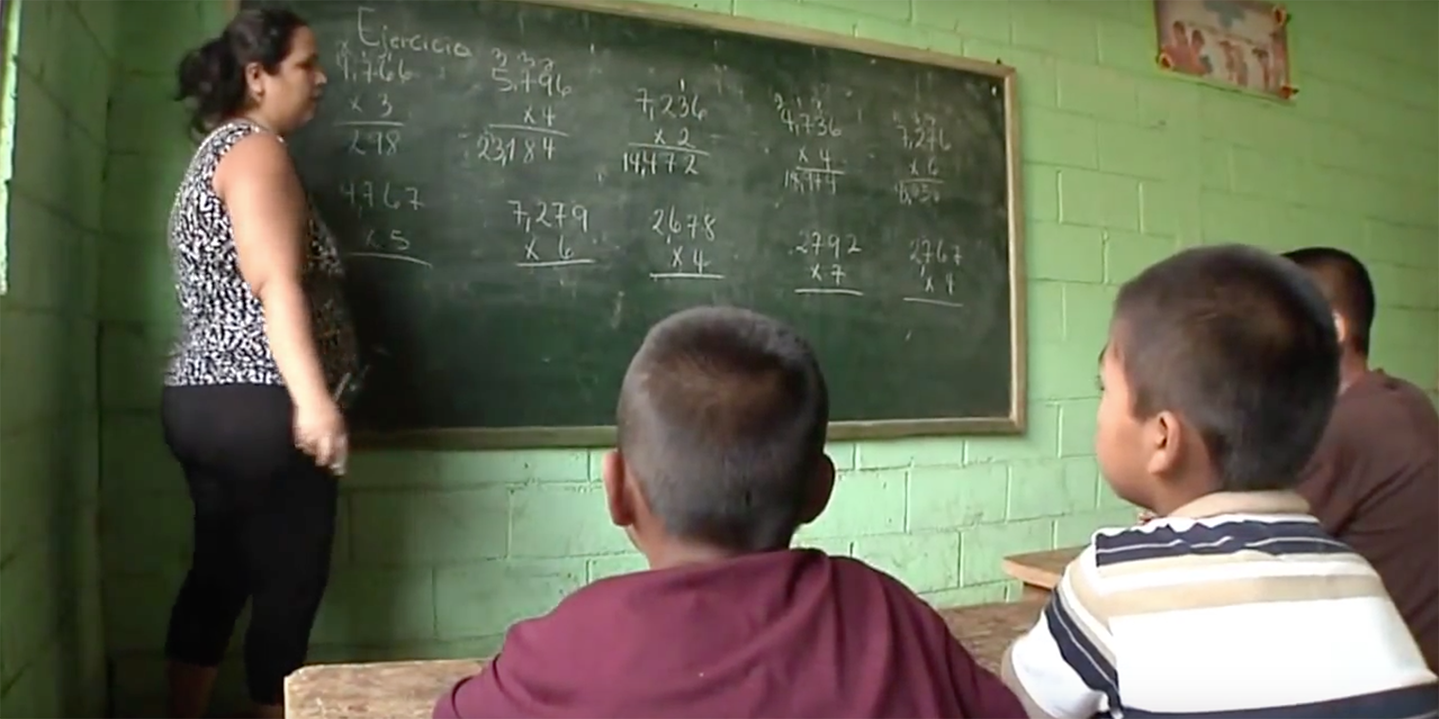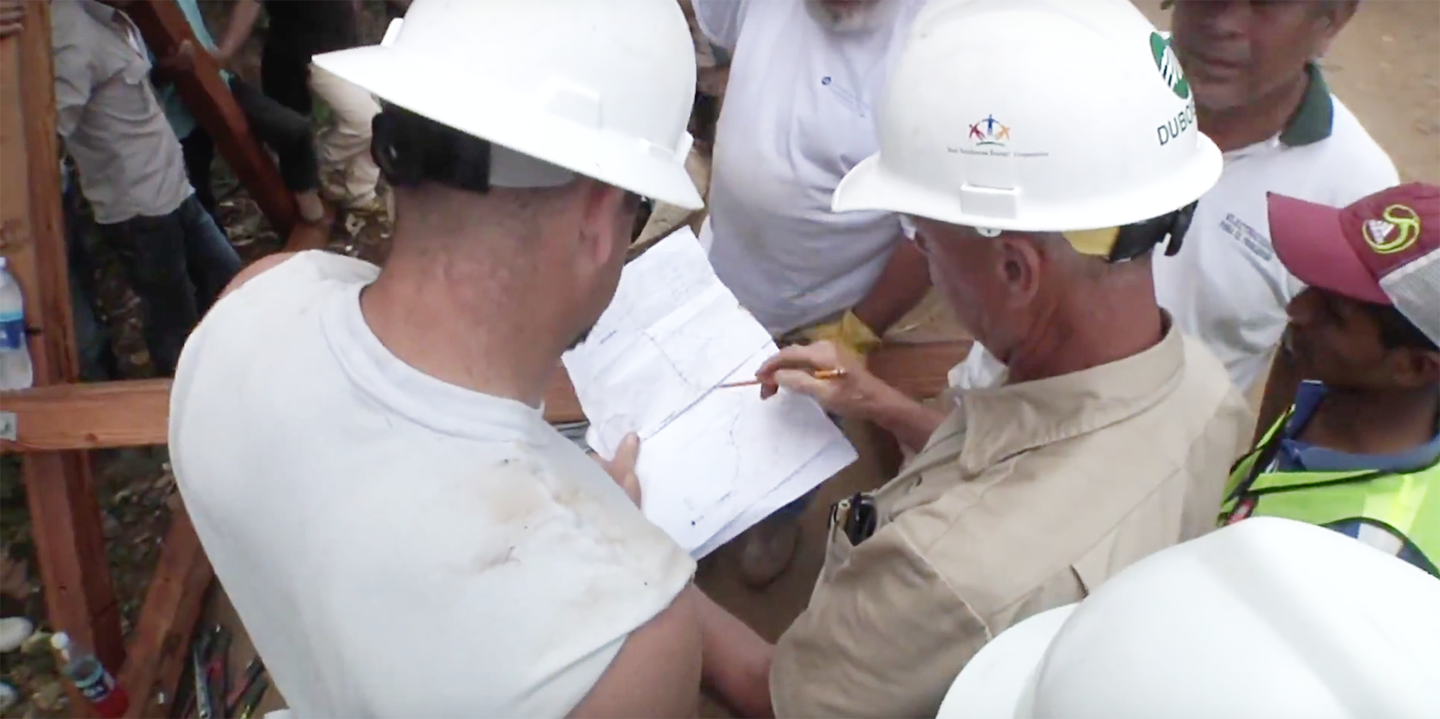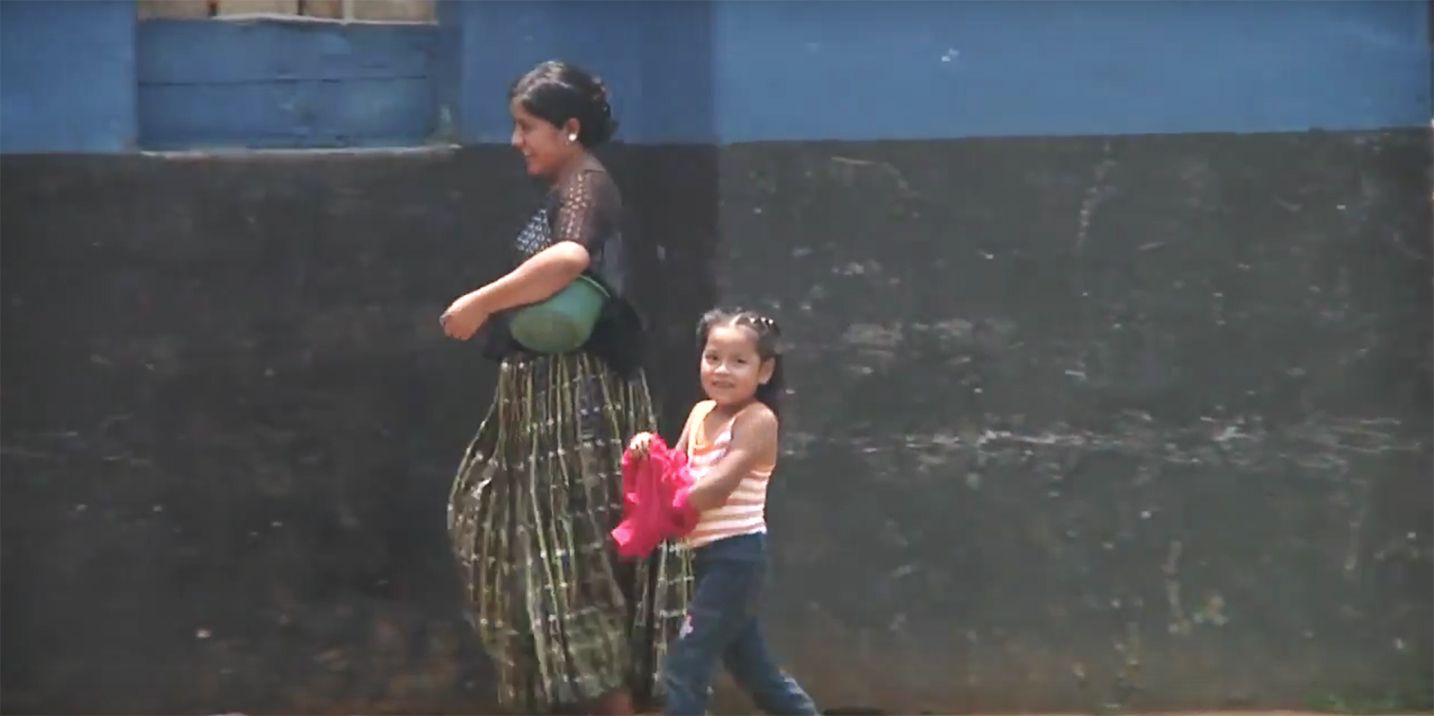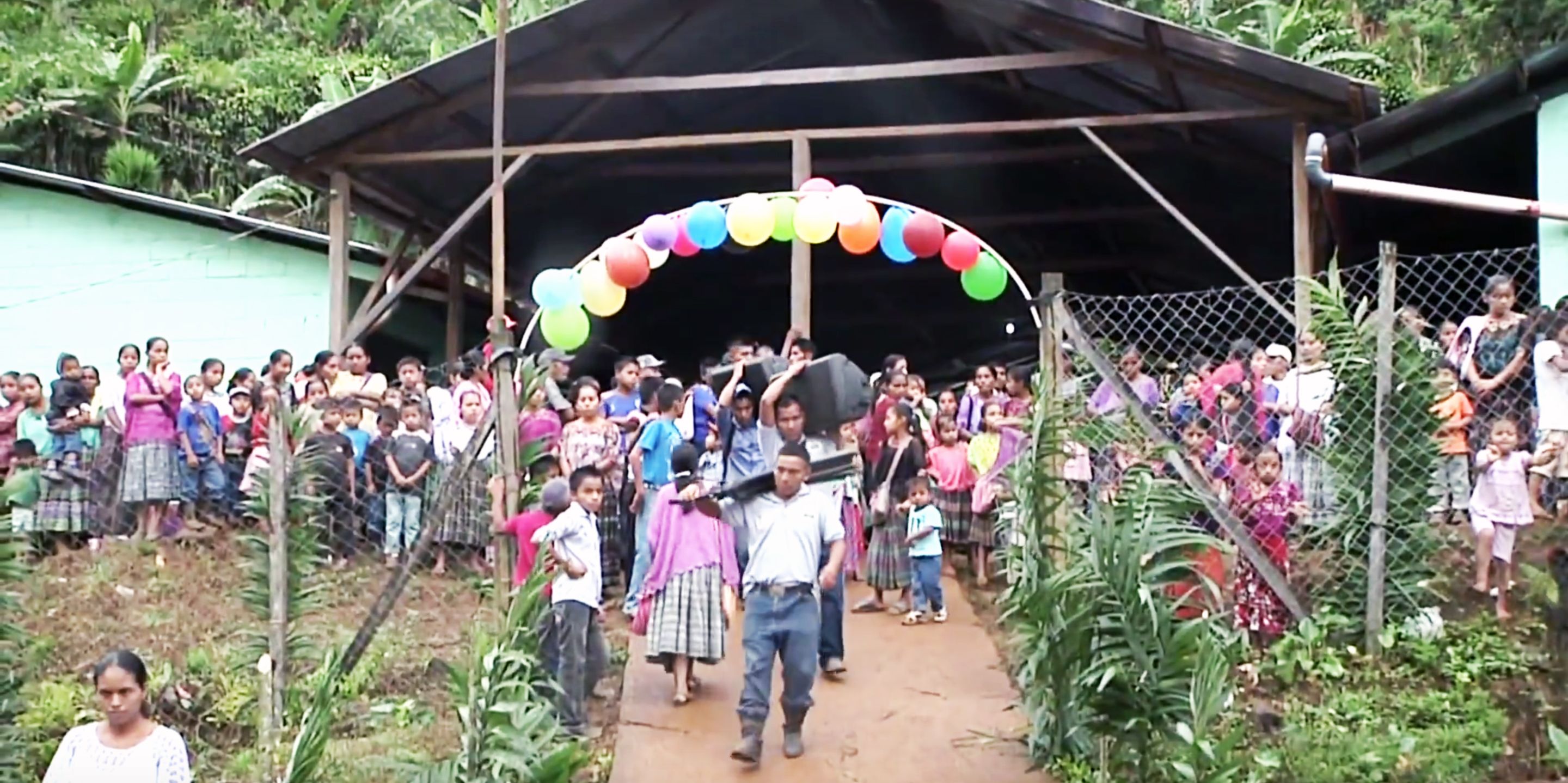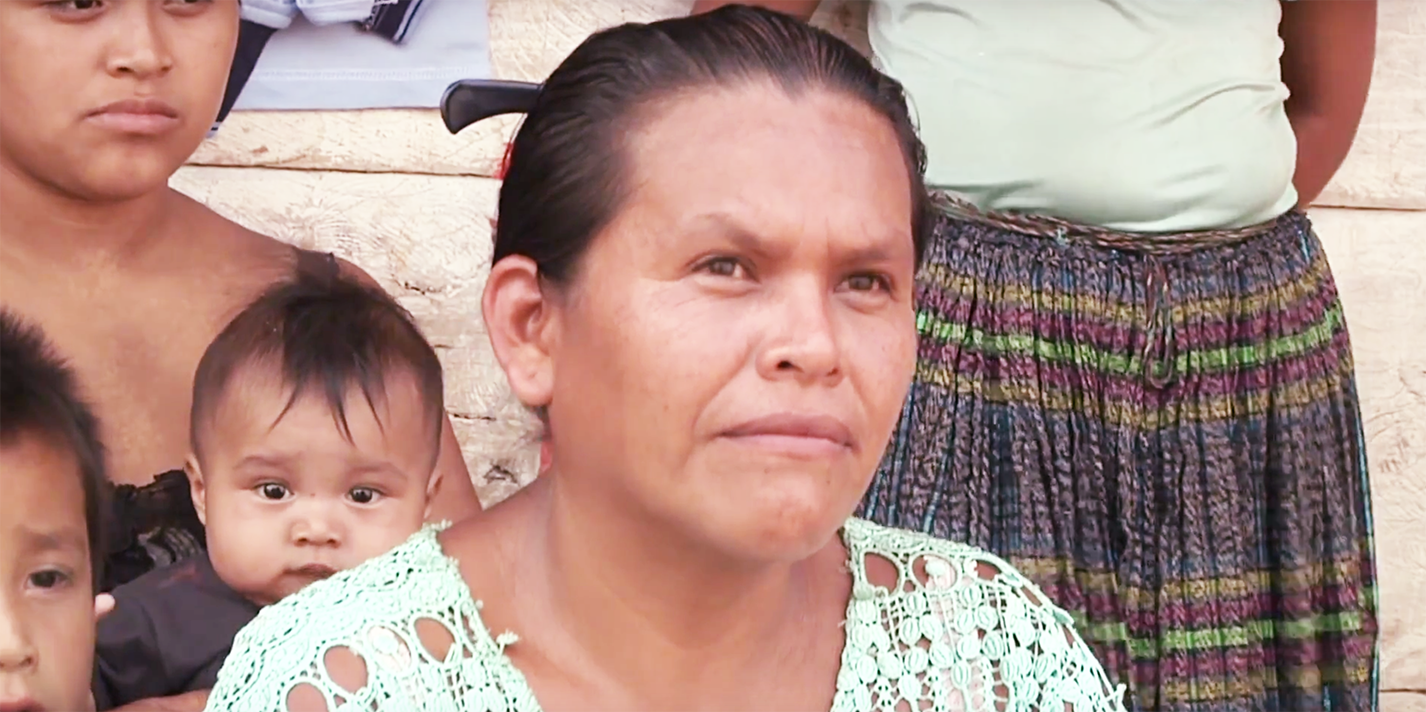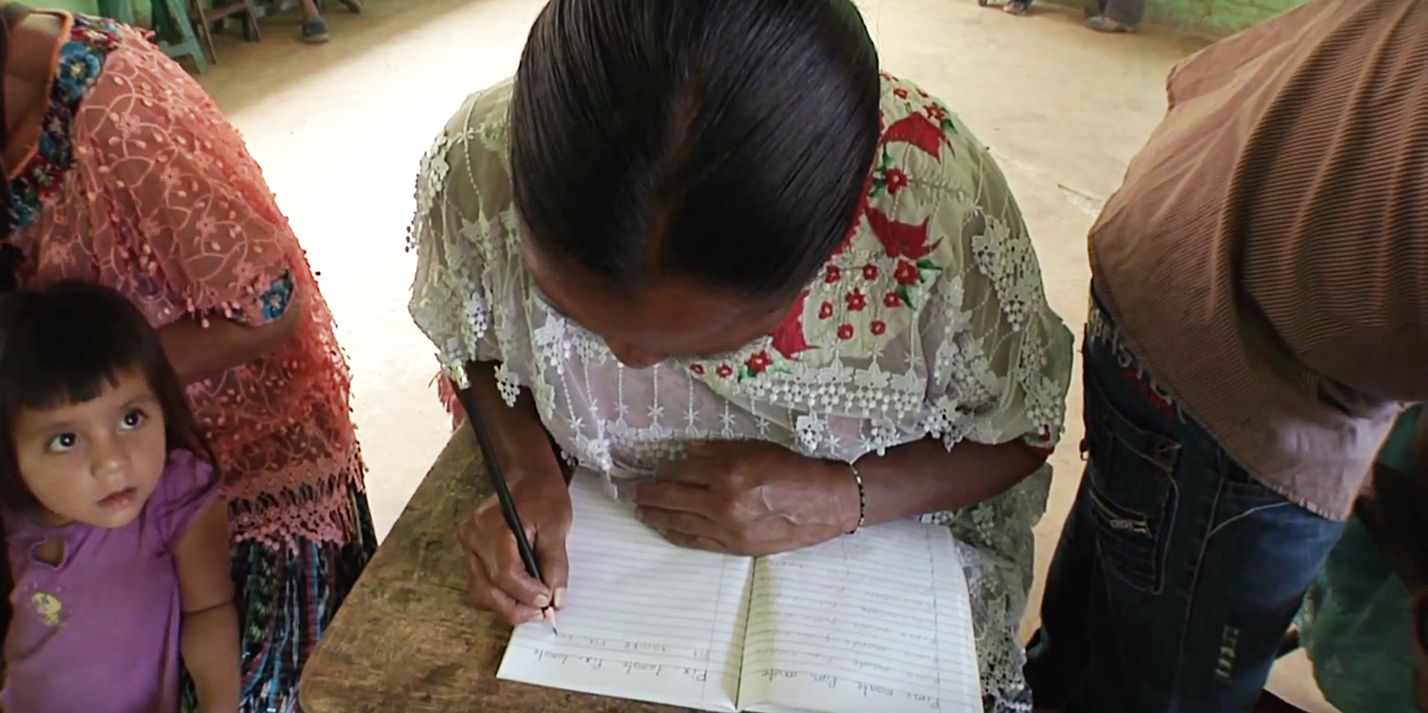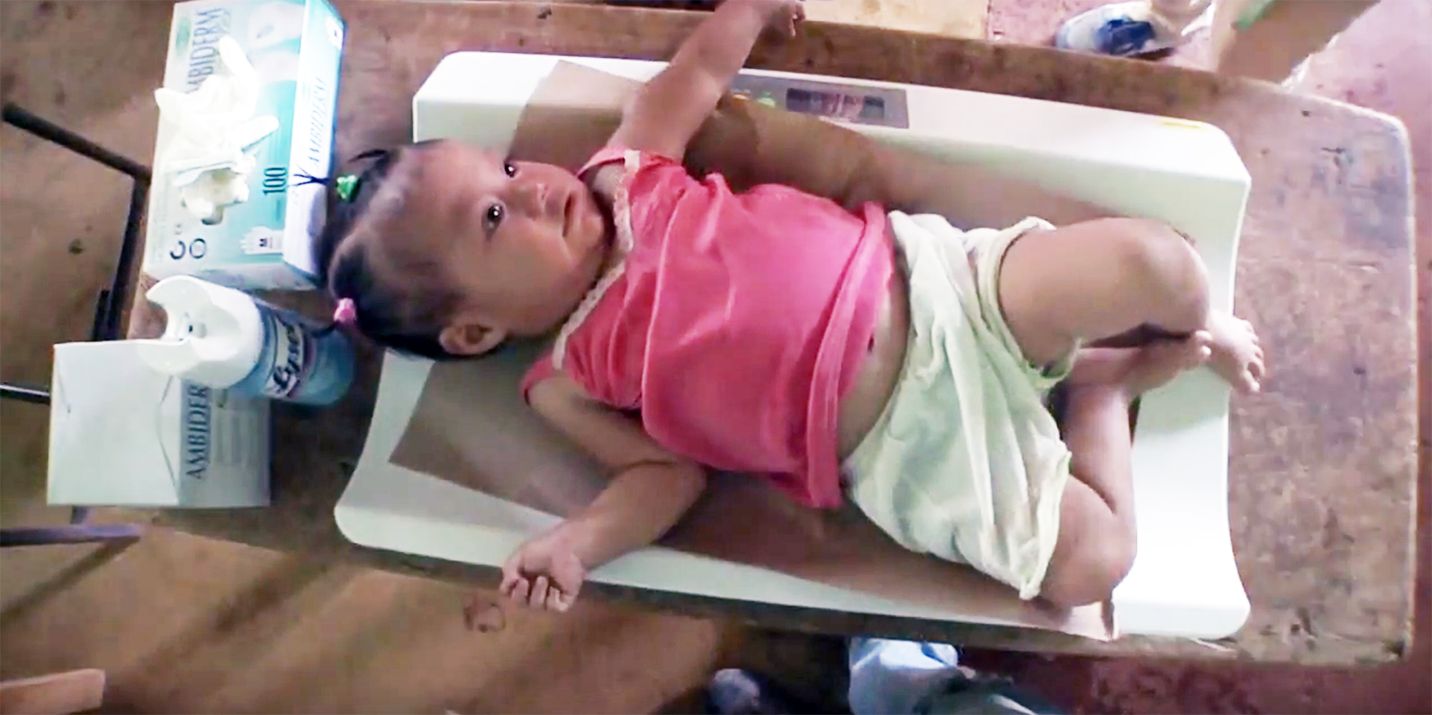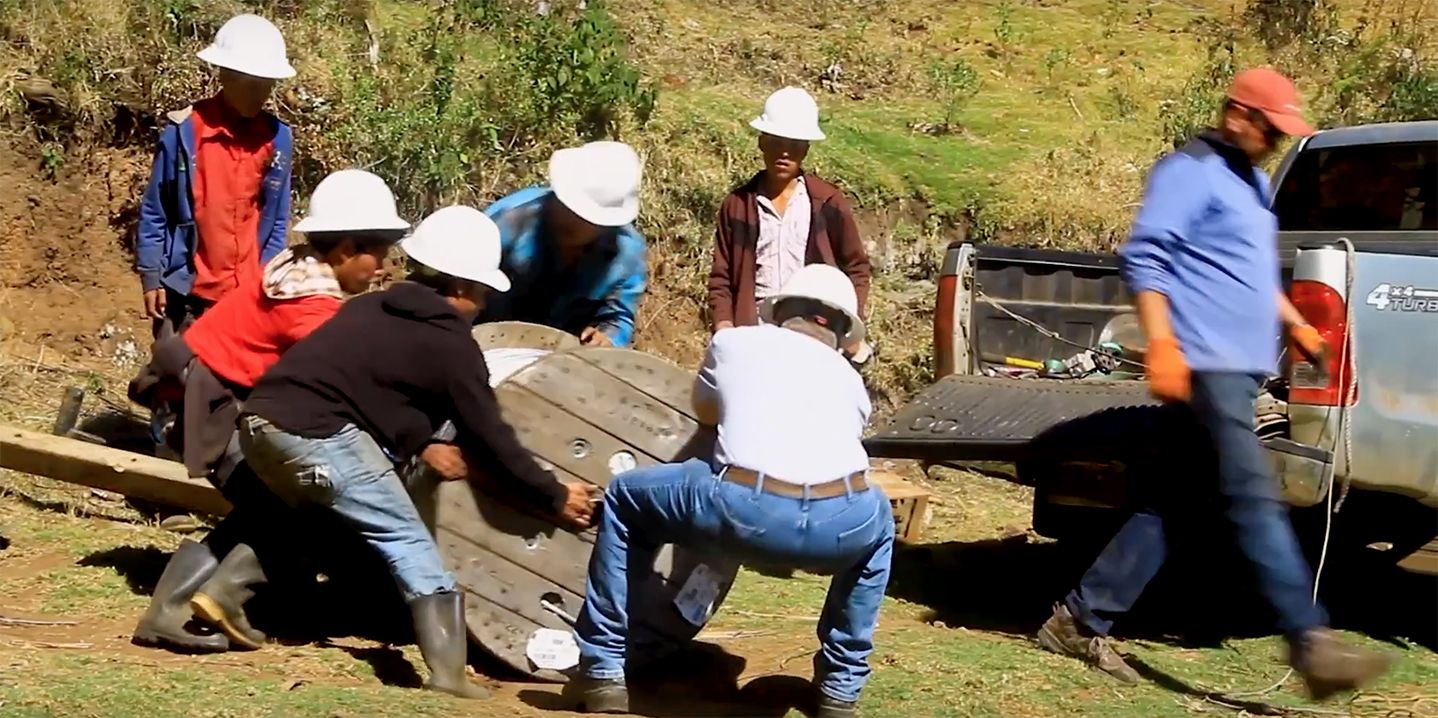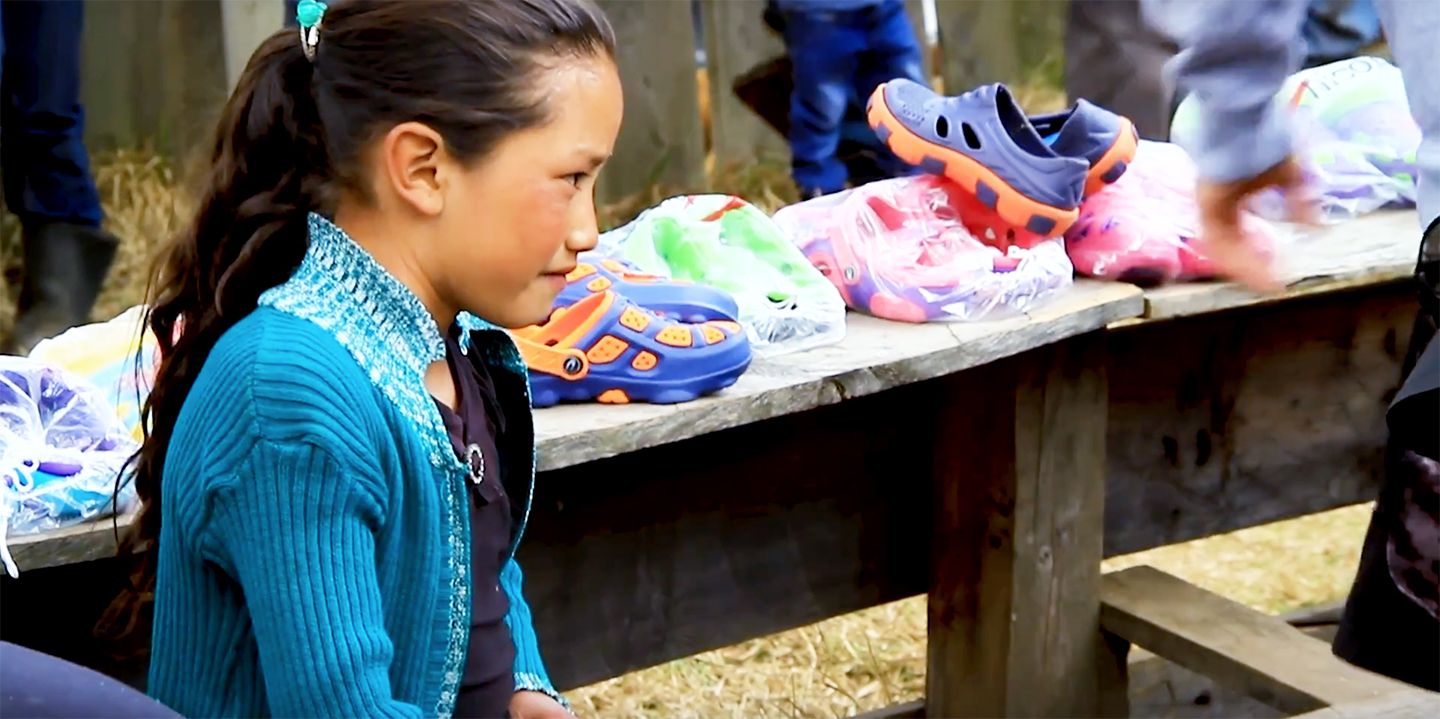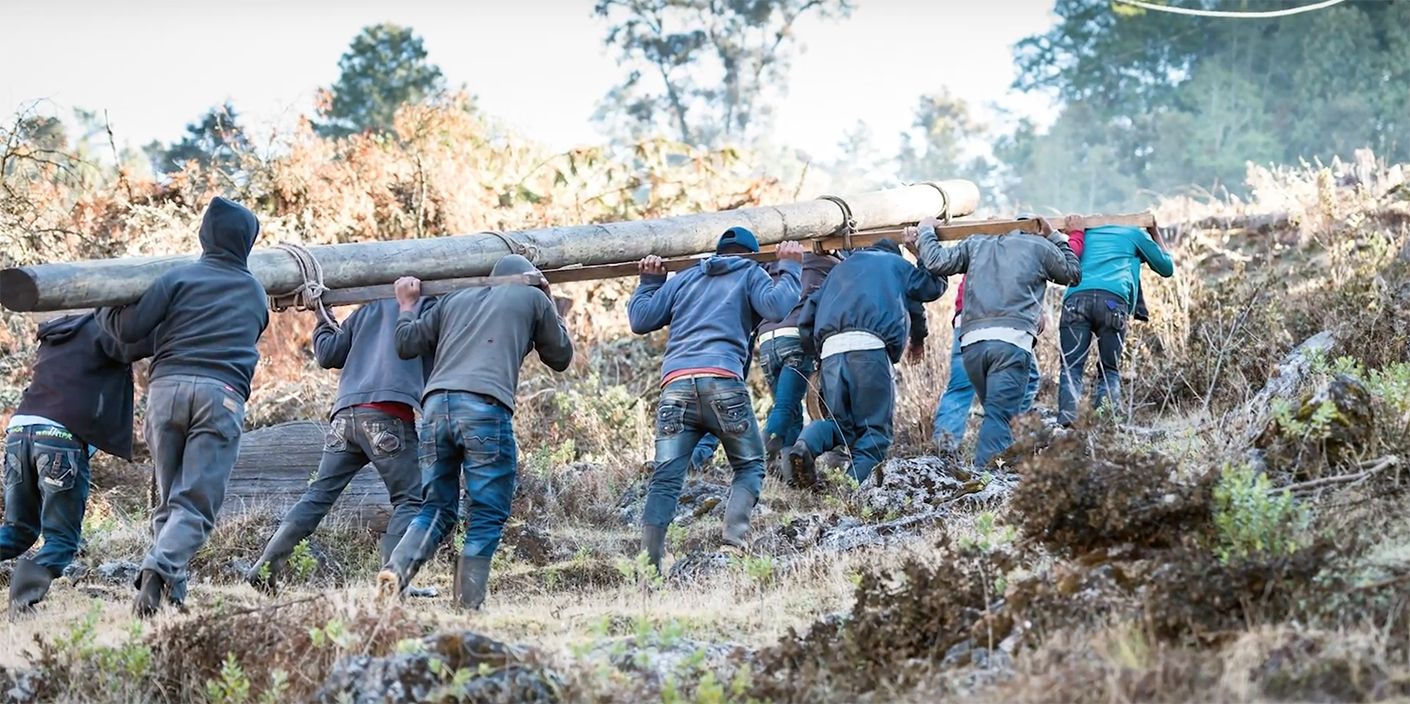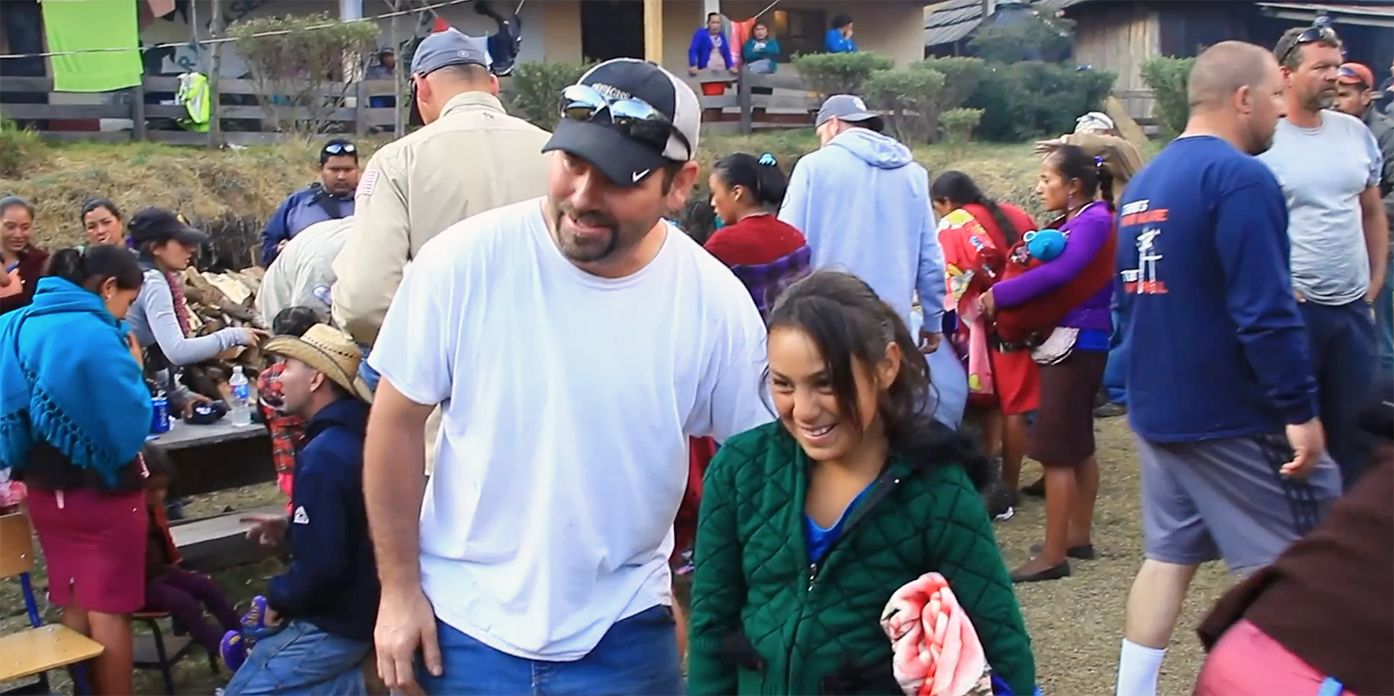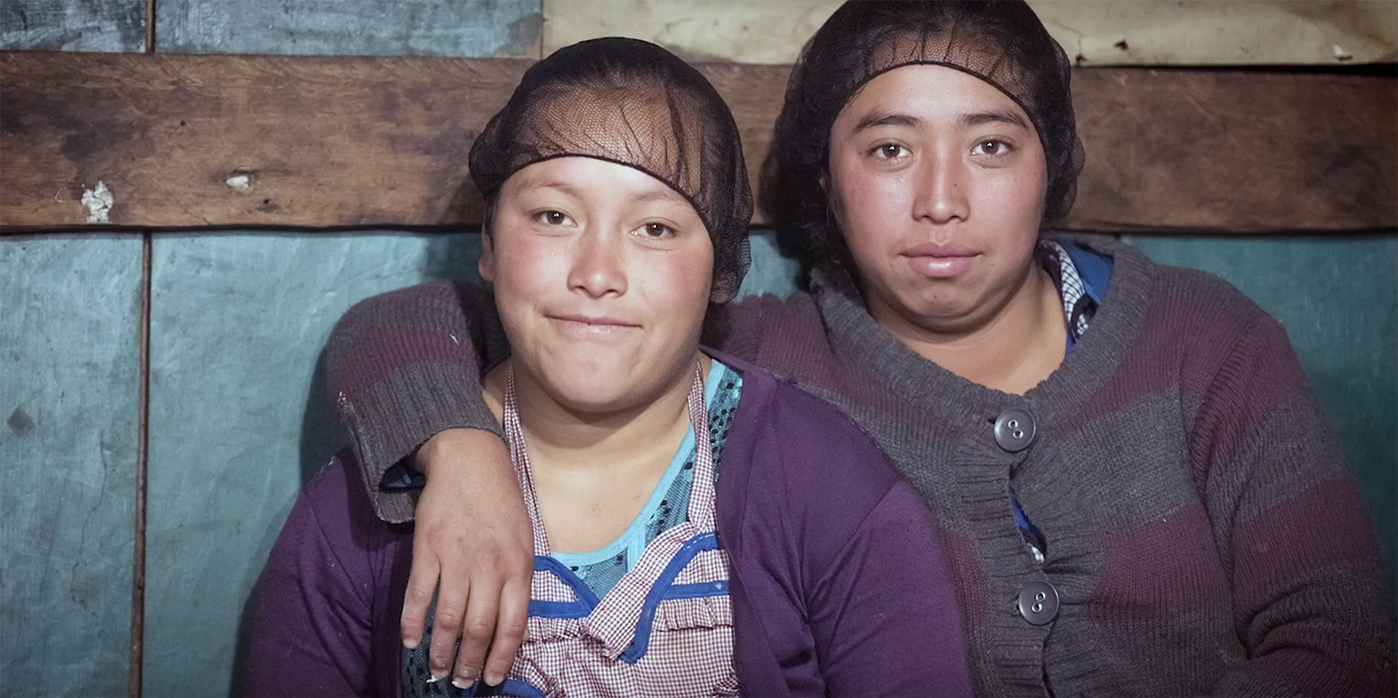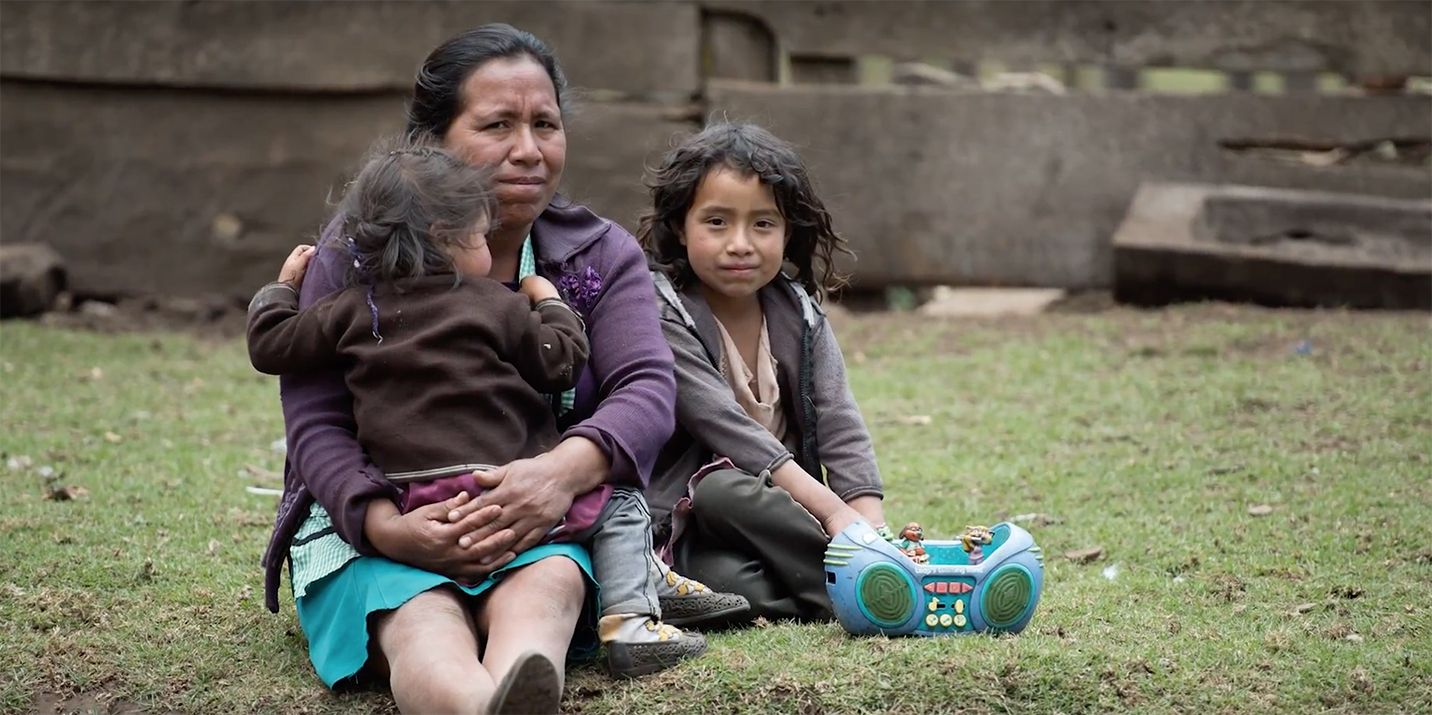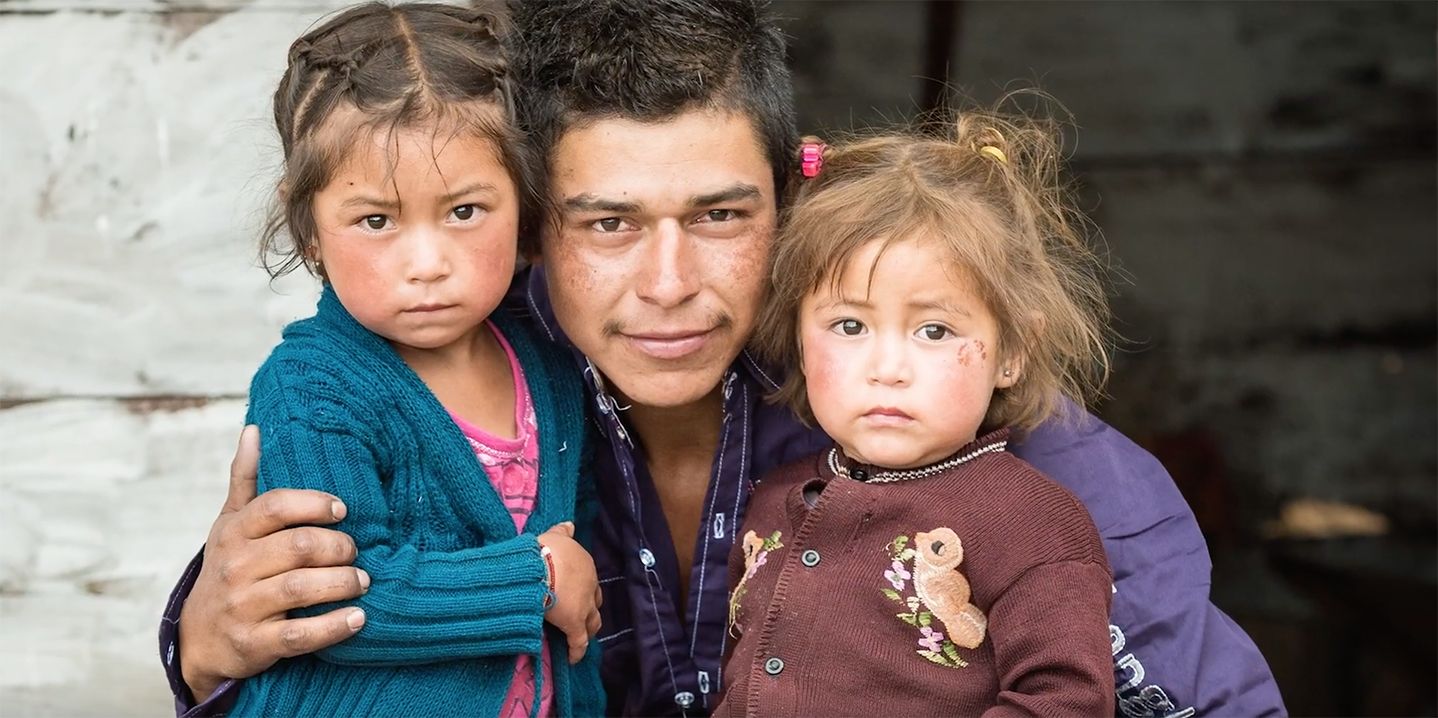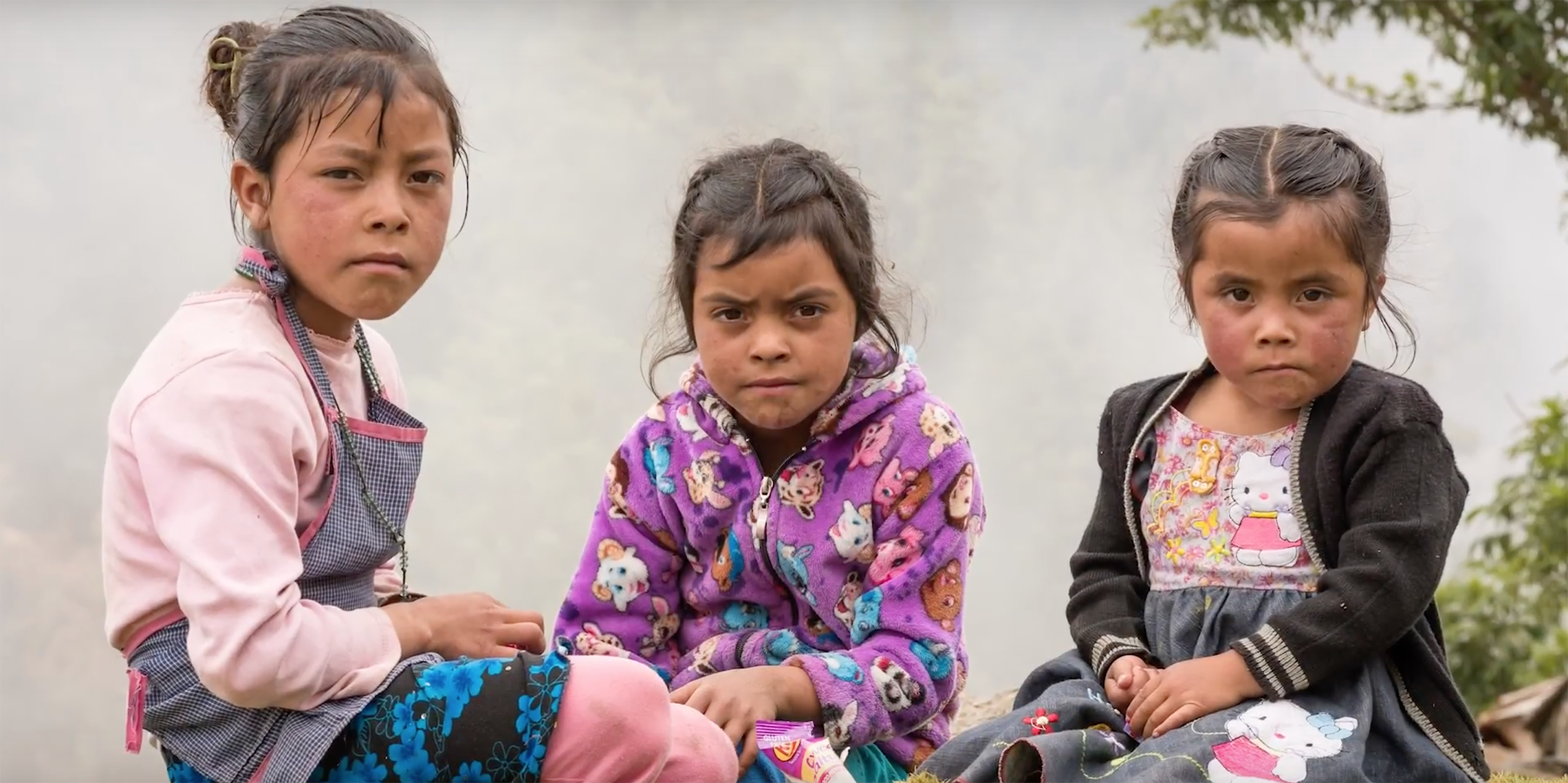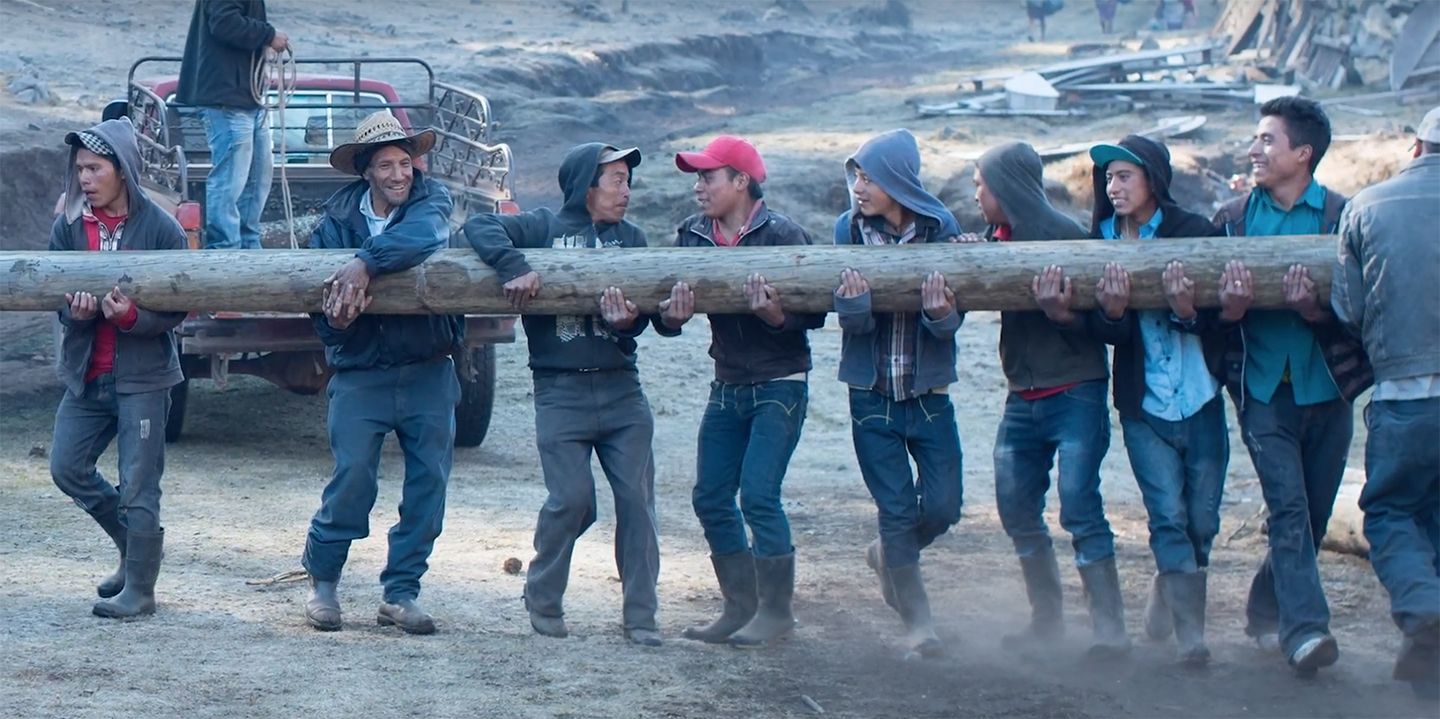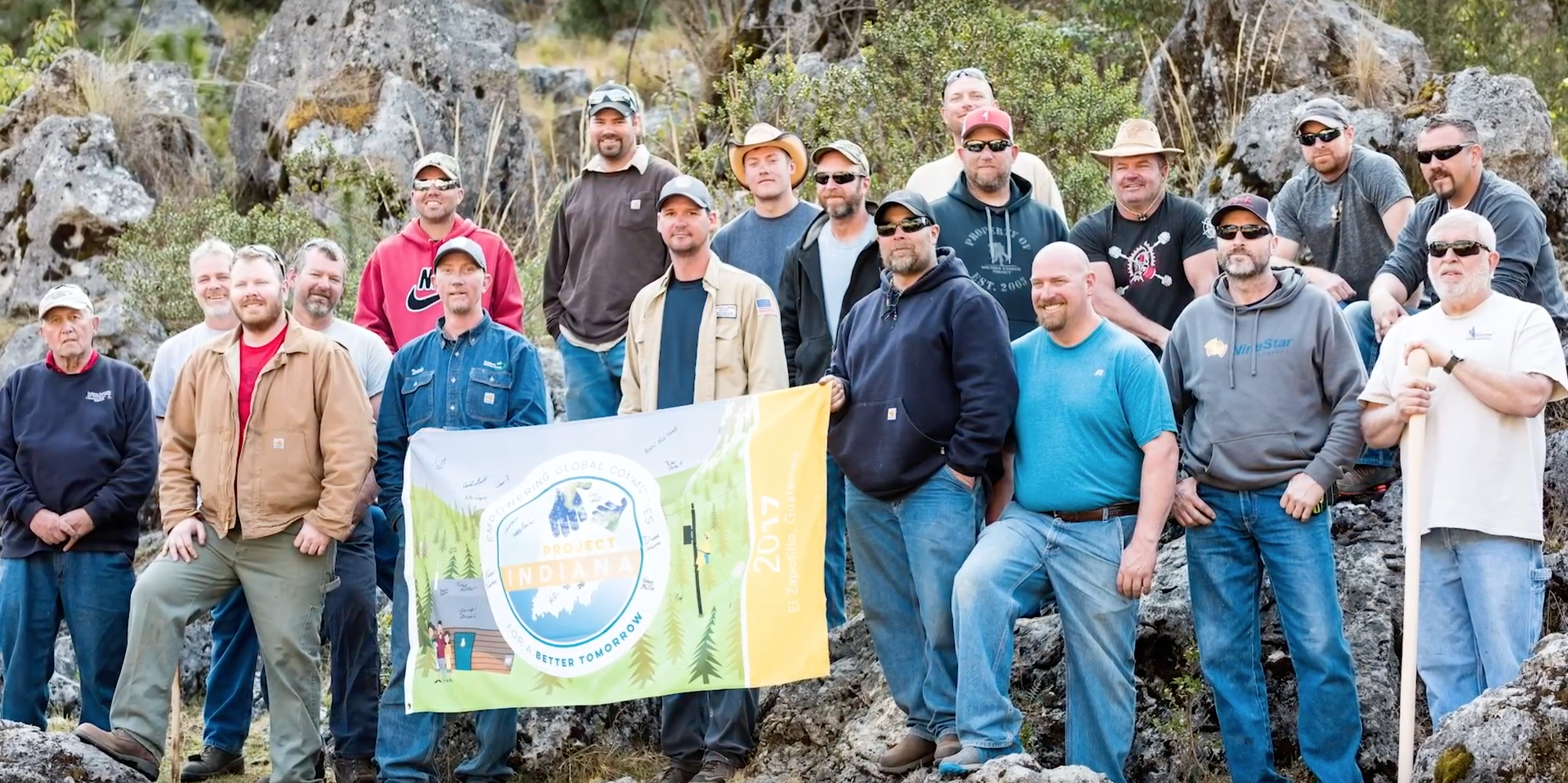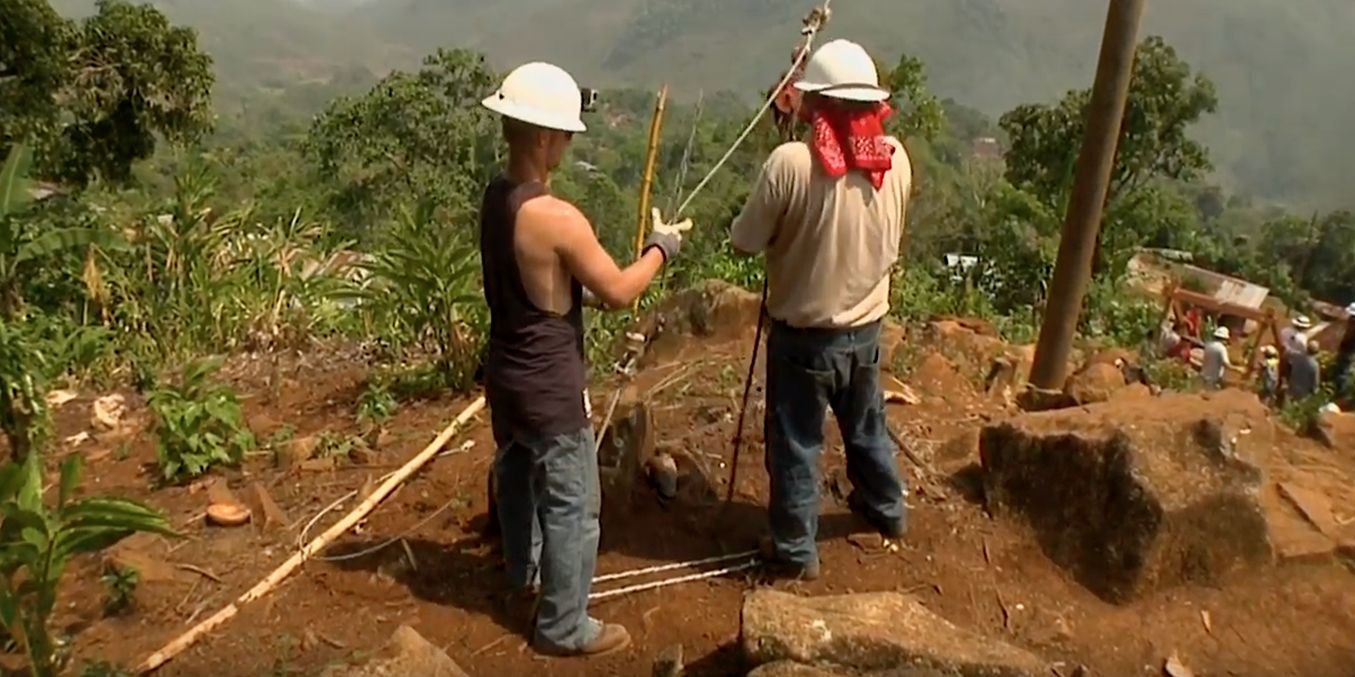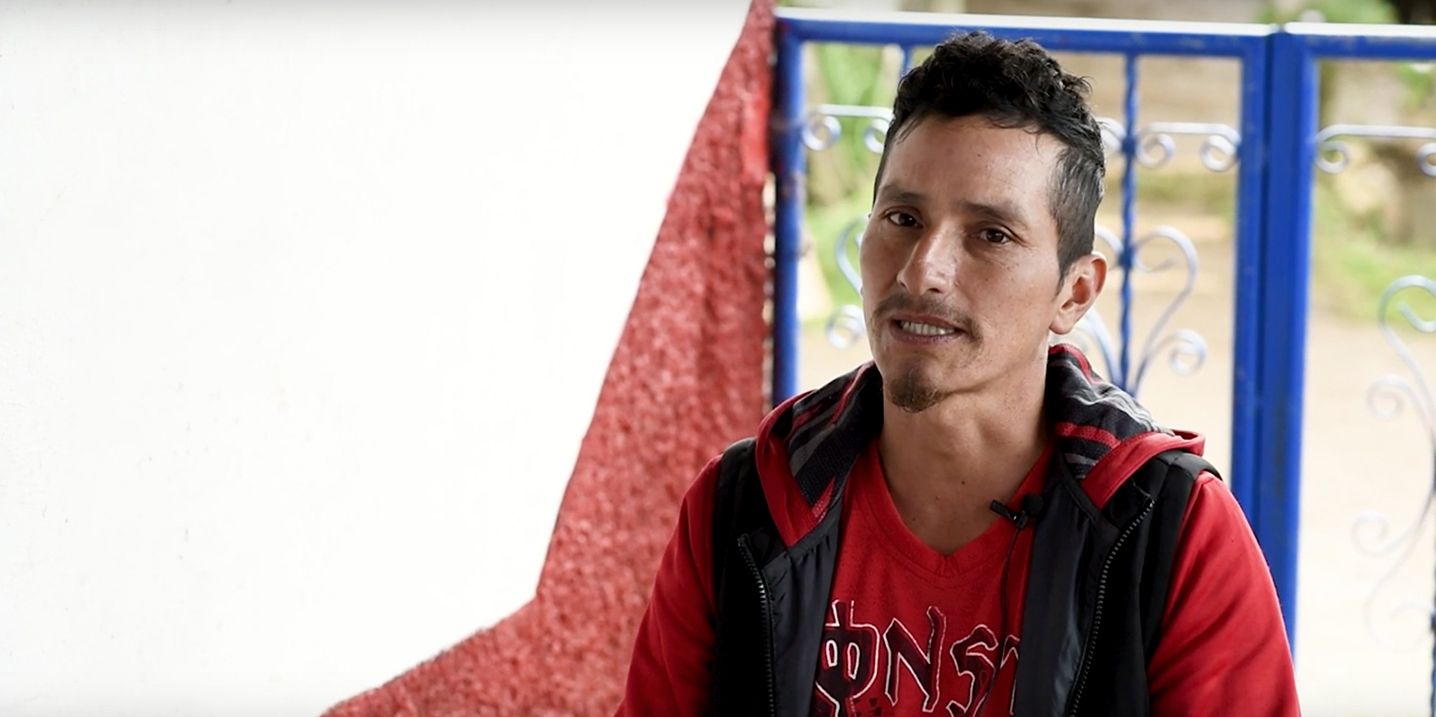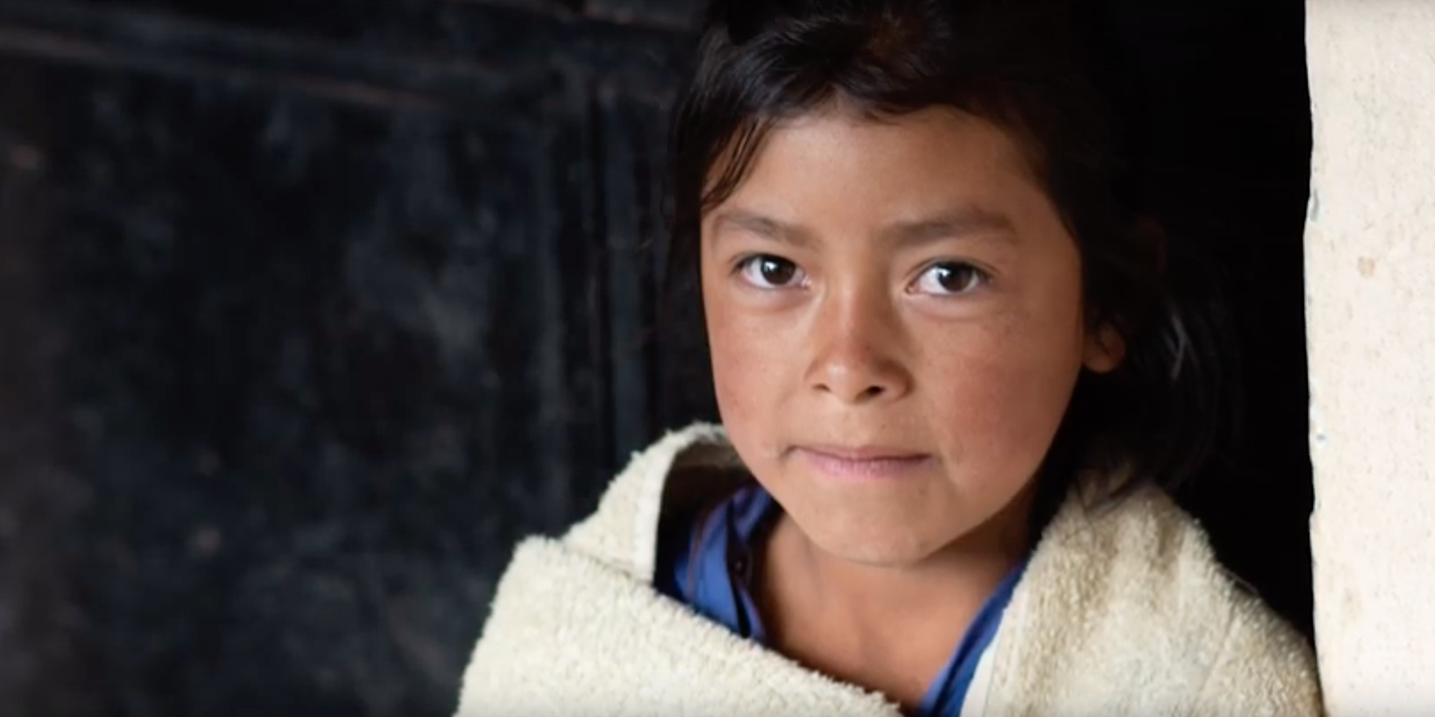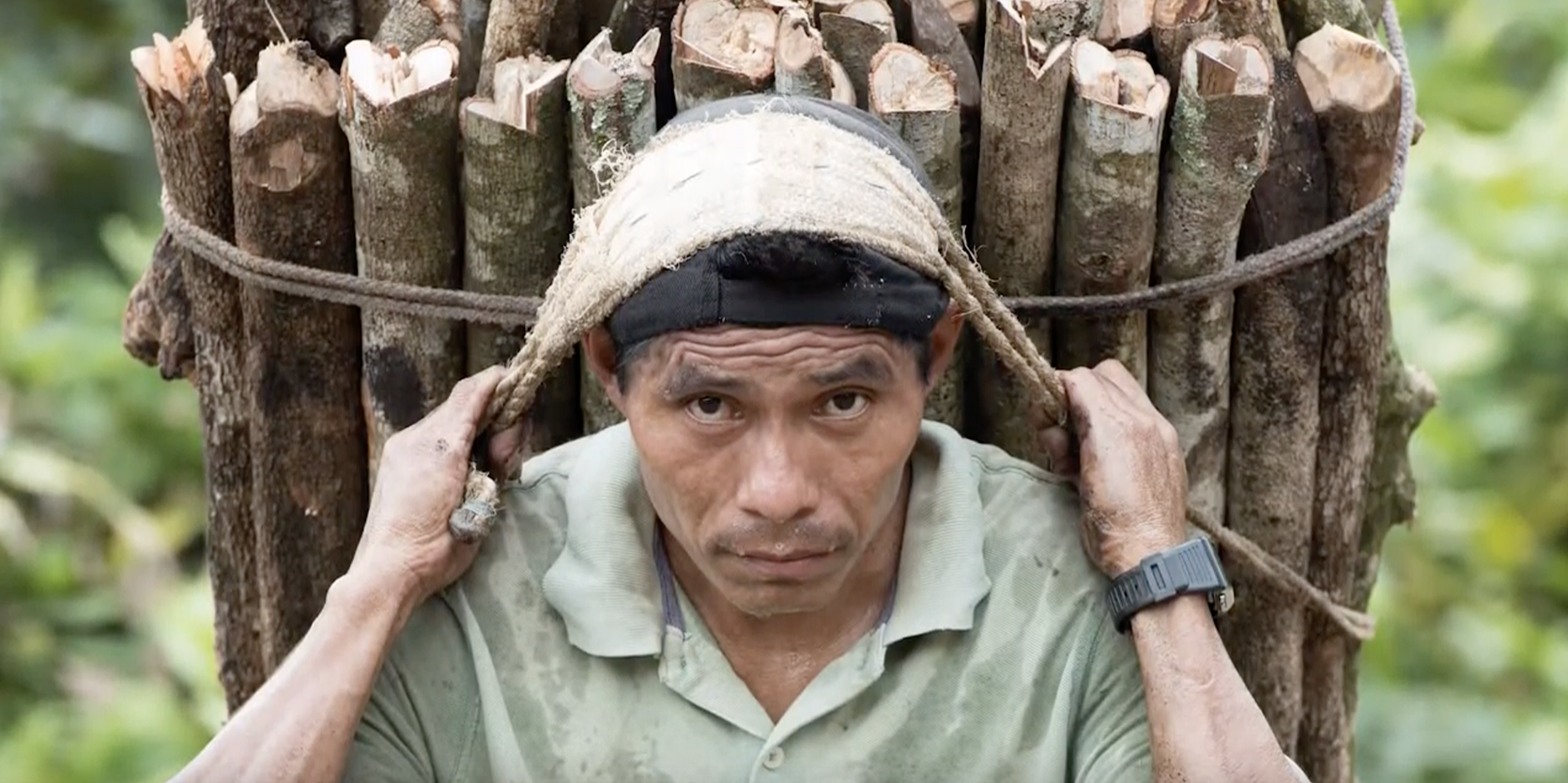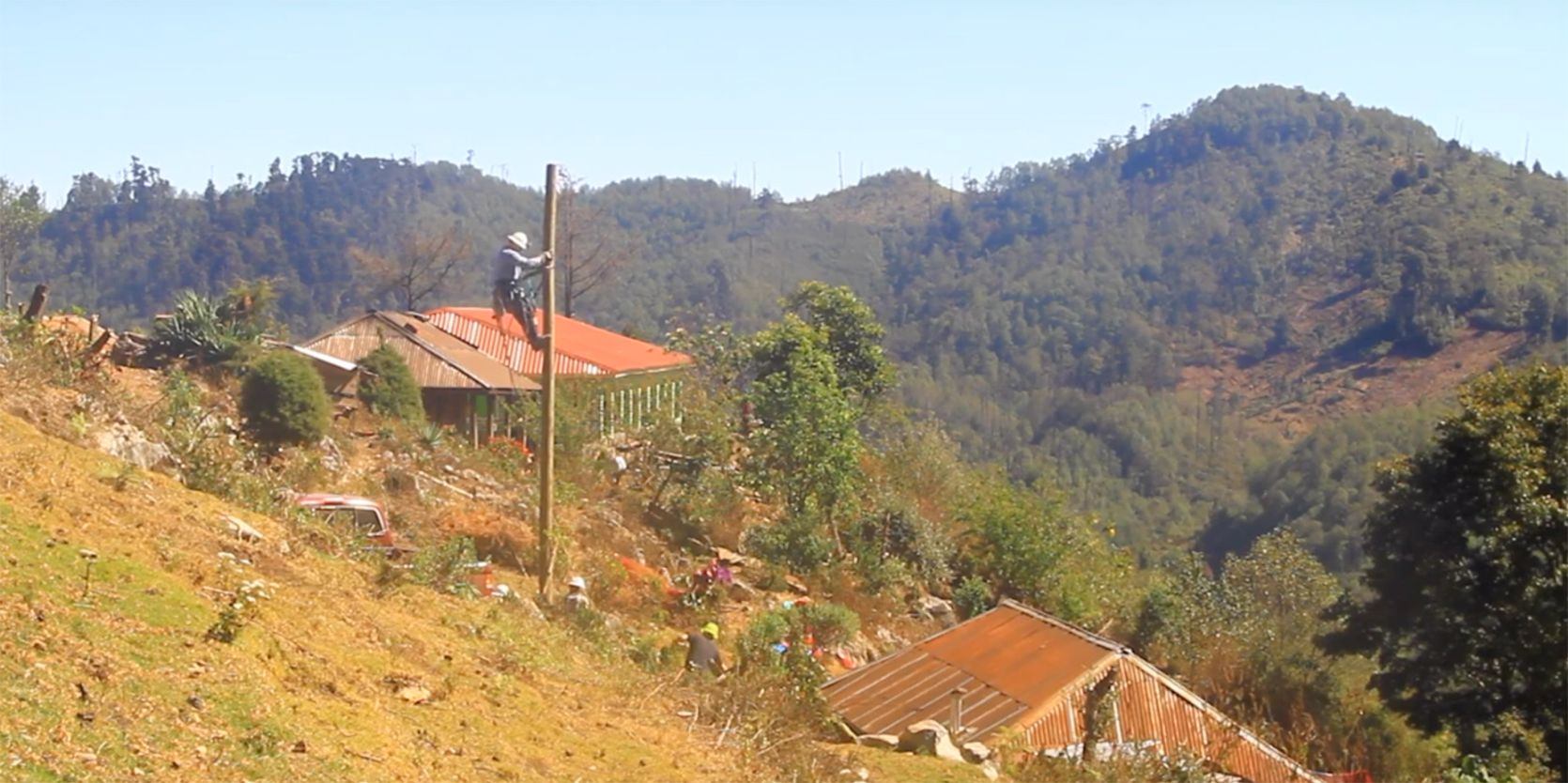Sepamac, Guatemala
Project Indiana’s roots harken back to 1930s-era rural Indiana — when electric cooperative lines were finally built in the countryside. Now, as Hoosiers “pay it forward” to their global neighbors, Guatemalan villagers who have lived without the benefits of electricity gain hope for greater opportunities, all because of Project Indiana.
Project Indiana would not exist without the hard work and dedication of electric cooperative lineworkers who work in the harshest of conditions — without modern conveniences — to bring electricity to remote Guatemalan villages. Meet the 14 lineworkers who battled extreme jungle heat to electrify the village of Sepamac in 2015. When you hear them talk about why they made the trip, you’ll realize you can help, too, without ever leaving your home.
The challenges seemed impossible to overcome: Eleven miles of wire, 76 electric poles, 96 anchors — all of which had to be installed BY HAND in 12 days. Oh, and the work had to be done in 100-degree heat. A daunting task, right? But, the Indiana electric cooperative crew of 14 finished its work four days ahead of schedule. The lineworkers did so by improvising, adapting and overcoming. Lean how they worked together amidst Mother Nature’s challenges and find out how Project Indiana changed lives.
Because of Project Indiana, students in Sepamac now have a school that will provide them with an enhanced education. With electric lights in their school, they can read and learn even when it’s dark outside. Their school has access to projectors and multimedia equipment, things we in the U.S. take for granted. When the students first saw the lights come on in their classroom, their joy was undeniable. But the most important impact lies in the promise of a brighter future.
Differences in background don’t matter when a group of people are committed to achieving a common goal. The Indiana electric cooperative lineworkers who electrified the village of Sepamac in 2015 developed a kinship with the Guatemalan people that will always endure. The lineworkers’ “from the heart” perspectives about the villagers and their Project Indiana experiences prove the world isn’t really as big as it seems.
Sepamac, Guatemala, is on the threshold of change — all because it was electrified through Project Indiana. Learn about the villagers’ efforts to form an electric cooperative to supply their power needs. Tag along with Gayvin Strantz, who’s led all of Project Indiana’s crews, as he tours a Guatemalan hydroelectric generation facility. And meet Guatemala’s national cooperative leader who describes how Guatemala’s strong cooperative culture will benefit Sepamac.
During their two weeks in Sepamac, Guatemala, the 2015 Project Indiana team members not only built power lines, they built relationships. The lineworkers agreed: the hardest part of the trip was saying “goodbye.” Experience the end of the Project Indiana team’s electrifying journey, and watch friends and family welcome their lineworker heroes back home again to Indiana.
Sepamac is located in Guatemala’s “poverty belt,” and 75 percent of the region’s rural families are considered poor. Meet a female farmer and businesswoman who struggles to take care of her family. And see how, on their last day in Guatemala, Project Indiana lineworkers help 87-year-old Sebastian Coz Coy and his family.
Childhood is fleeting in Sepamac, Guatemala. That’s especially so for the young girls in the village who must get up early each morning to complete their long lists of domestic chores. Because of their responsibilities, few girls finish school. In fact, 60 percent of the girls in Sepamac will leave school before they turn 15. Blanca Hortensia, who plans to become a teacher, is the first girl in the village to attend high school. Electricity inspires change, just like Blanca inspires other students to continue their education. In Sepamac, the impossible is becoming possible.
As part of the Project Indiana mission trip to Sepamac, Dr. Guillermo Sanchez and a team of nurses and nutritionists from Guatemala City visited the remote village to screen infants for malnutrition and provide high-protein supplements to mothers. Learn how Sanchez and an Indiana company, Sustainable Nutrition International, are helping bring hope and health to Sepamac.
El Zapotillo, Guatemala
In less than two weeks back in the spring of 2017, 16 Project Indiana lineworkers and three supervisors made history in the Guatemalan village of El Zapotillo by bringing electricity to the remote mountainous community for the first time. Find out what challenges the lineworkers faced, and learn how, no matter the obstacles, nothing could stop them from getting the job done.
The El Zapotillo electrification project may have been nearing its end, but the Project Indiana lineworkers were determined to do even more for their Guatemalan friends. They gifted each of the village’s children with a pair of shoes.
The El Zapotillo villagers had set 51 electric poles by themselves — all by hand. They thought they’d done what they needed to do to get electricity to their village. But they hit a snag. One more pole needed to be set on a steep hillside. This time the Project Indiana lineworkers were there to help. Setting Pole 52 was a joint effort between the villagers and the volunteer crew from Indiana.
Not only do the Project Indiana volunteers change lives, they are, in fact, changed themselves. Hear from the 2017 Project Indiana team members who share their life-changing memories.
The statistics help tell the story of how Project Indiana is changing lives. Here are the numbers behind the 2017 Project Indiana mission trip.
When the Project Indiana lineworkers made the commitment to electrify the remote village of El Zapotillo, they were motivated by the same “cooperative spirit” that infuses every job they undertake — at home as well as high up in the Guatemalan mountains.
Getting electricity is the first step in a whole new future for the El Zapotillo villagers. What’s next for the men, women and especially children who are slowly getting used to the power of power? And what hopes do the Project Indiana lineworkers have for the future of their new friends?
The children of El Zapotillo are sweet, strong and beautiful. They’re eager to please and ready to work. But the average Guatemalan child attends school for just 3 ½ years. The children suffer from malnutrition, which stunts their growth and damages their teeth. The Project Indiana lineworkers hope having electricity will help the younger villagers lead better lives than their elders.
Everyone works in El Zapotillo — including the children. Though work is constant, poverty is inescapable. But that doesn’t deter the gratitude and resiliency of the villagers.
Hope, opportunity and progress are now possible for the residents of El Zapotillo because of the Project Indiana lineworkers. With your help, more communities can be empowered and more lives can be changed for the better.
Project Indiana Progress
Why do the Project Indiana volunteers choose to travel to rural Guatemala amidst difficult rugged conditions to help bring electricity to remote villages? We asked the linemen themselves and discovered not only why they did it but why they’d do it again. Project Indiana changes lives — not just the villagers’ lives, but the lives of the trailblazing volunteers who brought change and hope to their Central American neighbors.
Project Indiana not only helps bring electricity to unserved areas of rural Guatemala — it brings hope. Itinerant farmer Adrian Bartolon Marciagos is one of the 80 percent of Guatemalans who live in poverty. But when 31 Hoosier linemen traveled to Hoja Blanca, Guatemala, in 2012 to electrify that village, Adrian realized brighter days were possible. Five years later, another group of lineman changed lives in El Zapotillo. And Adrian is thankful that the “no win” cycle of the hard-working villagers can finally end.
Giving hope to the poverty stricken children of Guatemala is a major reason Project Indiana volunteers are so passionate about their work. Meet some of the children who have captivated Project Indiana crews in the past and hear why it’s so important to do whatever we can to ensure Guatemala’s next generation has access to a brighter future.
The Project Indiana initiative continues to grow. During the latest mission trip to San Jacinto in the spring of 2019, villagers were given cook-tops so their antiquated wood stoves could be eliminated. Indiana linemen trained the village’s linemen to wire homes. Solar panels are being tested and electric co-ops are being formed. Plans are in place to build a middle school so the children can extend their education to the eighth grade, which was previously unheard of. Finally, due to Project Indiana, villagers’ dreams for a better future are instead becoming plans.
In August 2012, the first group of Project Indiana volunteers brought hope and electric light to the villagers of Nueva Esperanza, Guatemala; villagers like Rosa Sanchez. When Sanchez, who had lived in hardship and darkness for seven decades, flipped the village’s first electric switch, she did something else —something she seldom did. She smiled. Since then, four other Project Indiana line crews have been back to electrically unserved areas of Guatemala, doing whatever it takes to help other villagers smile and also attain brighter futures. Why? Because we promised to help. And we don’t break promises.
